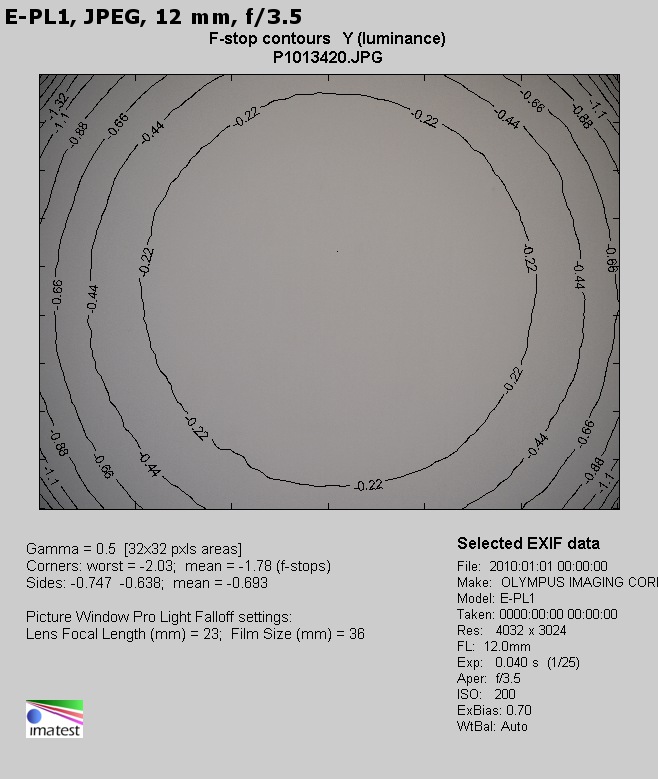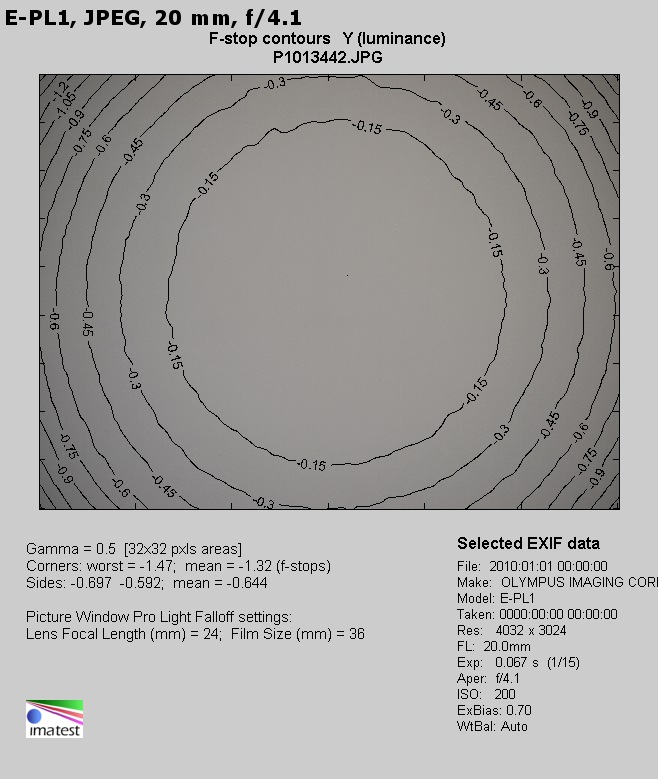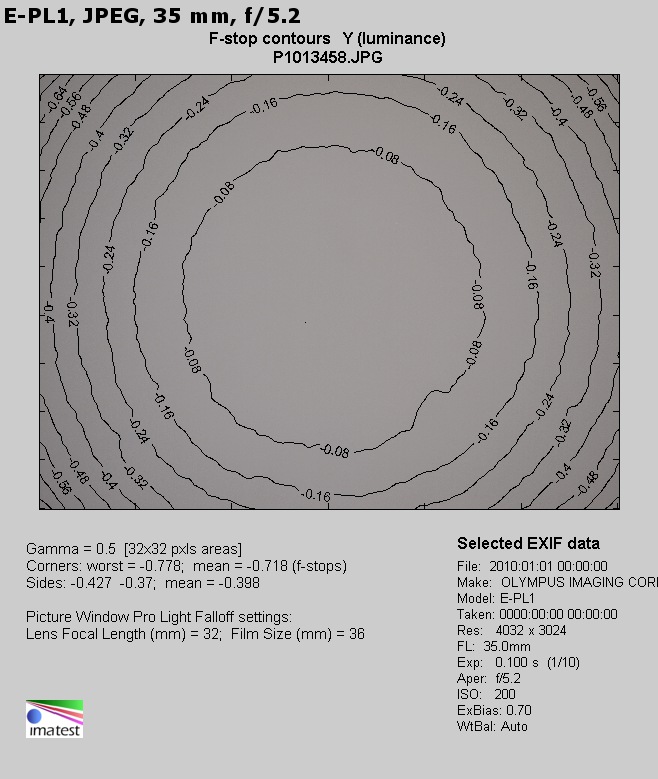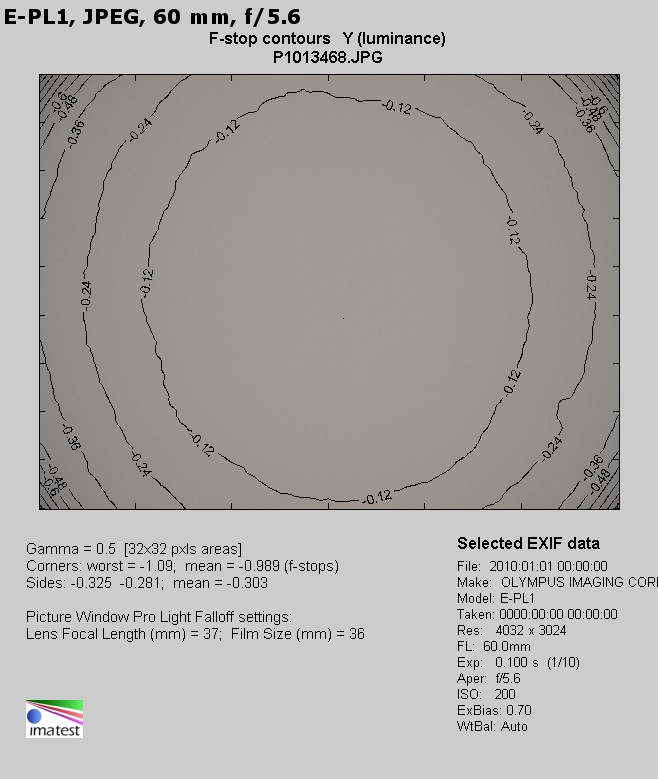Panasonic Lumix G 12-60 mm f/3.5-5.6 ASPH. POWER O.I.S.
8. Vignetting
| E-PL1, JPEG, 12 mm, f/3.5 | E-PL1, JPEG, 12 mm, f/5.6 |

|

|
| E-PL1, JPEG, 20 mm, f/4.1 | E-PL1, JPEG, 20 mm, f/5.6 |

|

|
| E-PL1, JPEG, 35 mm, f/5.2 | E-PL1, JPEG, 35 mm, f/8.0 |

|

|
| E-PL1, JPEG, 60 mm, f/5.6 | E-PL1, JPEG, 60 mm, f/8.0 |

|

|
At a difficult combination of 12 mm focal length and f/3.5 aperture the vignetting is distinct, reaching 46% (−1.78 EV). Taking into account the size of the sensor it is a weak result, noticeably weaker than that of the Olympus 12-50 mm. When you stop down the aperture to f/4.0 the vignetting decreases to 41% (−1.53 EV). A moderate level can be reached by f/5.6 where that aberration is 29% (−1.01 EV). By f/8.0 and f/11.0 the vignetting gets to respectively: 24% (−0.79 EV) and 22% (−0.73 EV).
Please Support UsIf you enjoy our reviews and articles, and you want us to continue our work please, support our website by donating through PayPal. The funds are going to be used for paying our editorial team, renting servers, and equipping our testing studio; only that way we will be able to continue providing you interesting content for free. |
- - - - - - - - - - - - - - - - - - - - - - - - - - - - - - - - - - - - - - - - - - - - - - - -
At longer focal lengths the situation becomes noticeably better. At 20 mm and f/4.1 the vignetting amounts to 37% (−1.32 EV) and by f/5.6 it decreases to 31% (−1.08 EV). By f/8.0 and f/11.0 the level of that aberration is respectively 24% (−0.80 EV) and 20% (−0.66 EV).
In the case of the maximum relative aperture the brightness loss in the corners at 30 mm reaches only 22% (−0.72 EV). On slight stopping down to f/5.6 that aberration decreases to 21% (−0.68 EV). By f/8 and f/11 the vignetting becomes almost imperceptible, amounting to 12–13%.
At 60 mm and by f/5.6 you have to take into account the loss of 29% (−0.99 EV) of light in the corners. The aberration becomes slight by f/8 where it reaches 13% (−0.41 EV) and disappears practically completely by f/11 (8% and −0.25 EV).
RAW files differ from JPEGs only at the shortest focal length where the image after distortion correction is noticeably cropped. That’s why the vignetting reaches as high as 59% (−2.62 EV) for RAWs at the maximum relative aperture. By f/4.0 it still remains huge, getting to 56% (−2.42 EV). Also by f/5.6 and f/8.0 you deal with huge losses of light, with vignetting levels of 45% (−1.73 EV) and 35% (−1.24 EV). Even by f/11.0 the vignetting can be noticed as it still reaches 27% (−0.90 EV).
 |
 |
 |
 |






